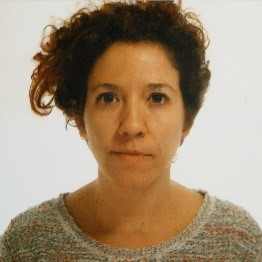Nanosensors: Sensing Principle, System and Application
A special issue of Electronics (ISSN 2079-9292). This special issue belongs to the section "Microelectronics".
Deadline for manuscript submissions: closed (31 January 2022) | Viewed by 5230
Special Issue Editors
Interests: biosensors; nanotechnology; optoelectronics; semiconductor; devices; sensors; plasmonics; surface plasmon resonance; plasmonic biosensing; plasmonic materials; plasmonic fabrication; microfluidics; integrated sensors; point-of-care devices
Special Issues, Collections and Topics in MDPI journals
Interests: nanomaterials; energy; environment
Interests: biosensors; electrochemical biosensors; electrochemical sensors; cyclic voltammetry; nanomaterials; electrochemical detection; electrochemical analysis
Interests: biosensor; FET; electrochemical; SERS; green technology
Special Issues, Collections and Topics in MDPI journals
Interests: biosensing; graphene; 2D materials; surface science; XPS
Special Issue Information
Dear Colleagues,
The recent trend in sensing technology development is to build from multidisciplinary aspects and brings a new horizon of collaborative studies from electronics, physics, chemistry, informatics, biosciences, and related fields especially in this era of nanotechnology. The enormous range of research topics focus on the specific design and application of sensors for biomedical, food safety, chemical, and environmental monitoring, which lead to detection advancement, performance enhancement, or system simplicity for practical use in various experimental fields. You are cordially invited to submit your novel studies in the nanosensor field to this Special Issue entitled, “Nanosensors: Sensing Principles, Systems, and Applications”.
Topics within the Special Issue scope include:
- Sensing design – theory and simulation of sensors.
- Sensing structures and principles – micro- and nanofabrication, nanostructures, nanoparticles, nanomaterials, organic materials, nanodevices, low-dimensional materials, metamaterials, metal oxide structure, 2D materials for sensors.
- Sensor platforms: optical, electrochemical, plasmonic, surface-enhanced Raman spectroscopy (SERS), magnetoresistive, field-effect transistor (FET), high-electron-mobility transistor (HEMT) sensors.
- Lab-on-a-chip: microfluidics, MEMS, micro-TAS, particle trapping, optical tweezers.
- Signal processing for sensors – data acquisition, smartphone sensor display, signal enhancement, pattern recognition, machine learning for sensors.
- System integration – wearable sensors, instrumentation and circuits for sensors.
- Low-cost and disposable sensors: organic sensor, lateral flow, miniaturized device, portable sensor, reusable sensing membrane, colorimetry sensing, non-lithographic fabrication, green synthesized sensors.
- Sensing treatment – surface, crosslinking and interface functionalization, assay strategy, sensing in complex media.
- Sensors applications – chemical sensors, gas sensors, biosensors, environmental monitoring.
Submissions on other topics are also welcome so long as they are within the theme of the Special Issue.
Dr. Briliant A. Prabowo
Prof. Brian Yuliarto
Dr. Joanna Jankowska-Śliwińska
Dr. Agnes Purwidyantri
Dr. Irene Palacio
Dr. Nicholas A. Kurniawan
Guest Editors
Manuscript Submission Information
Manuscripts should be submitted online at www.mdpi.com by registering and logging in to this website. Once you are registered, click here to go to the submission form. Manuscripts can be submitted until the deadline. All submissions that pass pre-check are peer-reviewed. Accepted papers will be published continuously in the journal (as soon as accepted) and will be listed together on the special issue website. Research articles, review articles as well as short communications are invited. For planned papers, a title and short abstract (about 100 words) can be sent to the Editorial Office for announcement on this website.
Submitted manuscripts should not have been published previously, nor be under consideration for publication elsewhere (except conference proceedings papers). All manuscripts are thoroughly refereed through a single-blind peer-review process. A guide for authors and other relevant information for submission of manuscripts is available on the Instructions for Authors page. Electronics is an international peer-reviewed open access semimonthly journal published by MDPI.
Please visit the Instructions for Authors page before submitting a manuscript. The Article Processing Charge (APC) for publication in this open access journal is 2400 CHF (Swiss Francs). Submitted papers should be well formatted and use good English. Authors may use MDPI's English editing service prior to publication or during author revisions.
Keywords
- Sensing design – theory and simulation of sensors
- Sensing structures and principles – micro- and nanofabrication, nanostructures, nanoparticles, nanomaterials, organic materials, nanodevices, low-dimensional materials, metamaterials, metal oxide structure, 2D materials for sensors
- Sensor platforms: optical, electrochemical, plasmonic, surface-enhanced Raman spectroscopy (SERS), magnetoresistive, field-effect transistor (FET), high-electron-mobility transistor (HEMT) sensors
- Lab-on-a-chip: microfluidics, MEMS, micro-TAS, particle trapping, optical tweezers
- Signal processing for sensors – data acquisition, smartphone sensor display, signal enhancement, pattern recognition, machine learning for sensors
- System integration – wearable sensors, instrumentation and circuits for sensors
- Low-cost and disposable sensors: organic sensor, lateral flow, miniaturized device, portable sensor, reusable sensing membrane, non-lithographic fabrication, green synthesized sensors
- Sensing treatment – surface, crosslinking and interface functionalization, assay strategy, sensing in complex media
- Sensors applications – chemical sensors, gas sensors, biosensors, environmental monitoring










